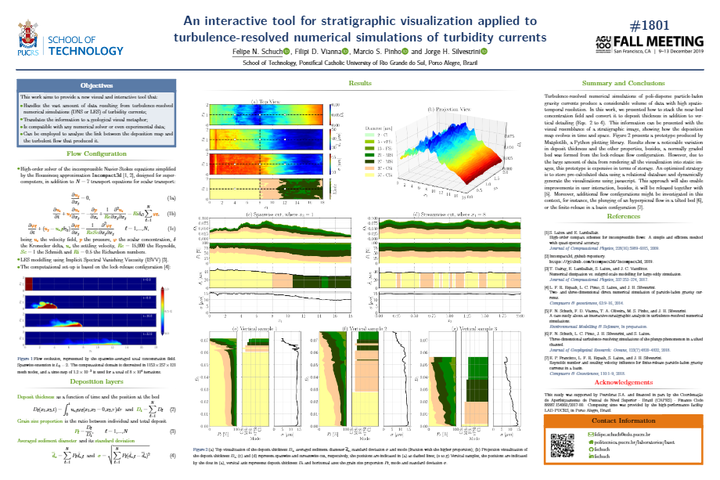An interactive tool for stratigraphic visualization applied to turbulence-resolved numerical simulations of turbidity currents

Abstract
Hyperpycnal flows are produced when the density of a fluid flowing in a relatively quiescent basin is greater than the density of the fluid in the basin. The density differences can be due to the difference in temperatures, salinity, turbidity, concentration, or a combination of them. Turbulence-resolved numerical simulations of such flows, in particular DNS (Direct Numerical Simulations), generate vasts amounts of resulting data. In the case of poli-disperse particle laden gravity currents simulations, where several sediments diameters are considered, very detailed data of the concentration field is available near bed. It can be post processed and analysed as a deposition map of one geological event. Traditional visualization tools lack the geological visual metaphor, and a new visual and interactive tool is proposed in this work. The aim of this new tool is to provide a better way to visualize numerical simulation results of particle laden gravity currents, plotting the results with the visual resemblance of a stratigraphic image. Since numerical simulation results usually have better spatio-temporal resolution compared to traditional stratigraphy, as the resolution depends exclusively on the amount of computing power available and it gets higher each day, the proposed interactive tool let the user visualize how the deposition map evolves in time and space. This tool can be employed to analyse the link between the deposition map and the turbulent flow that produced it, and the influence of all governing parameters. Numerical data was provided by Incompact3d, a code based on a Boussinesq system for incompressible fluids, designed for supercomputers. However this particular approach is a data driven post processing tool, thus it should be compatible with any numerical solver.